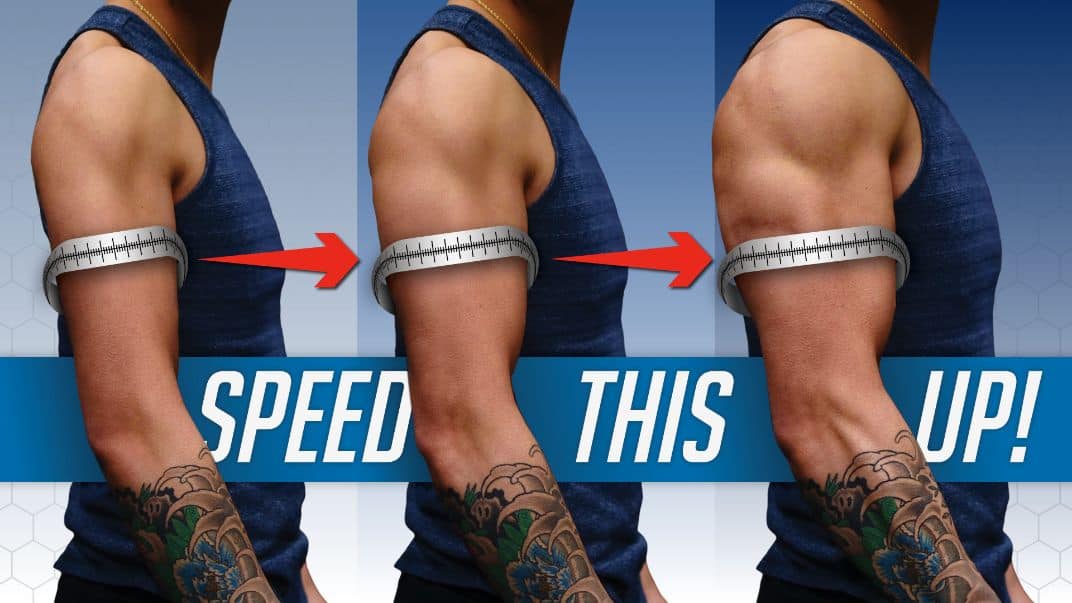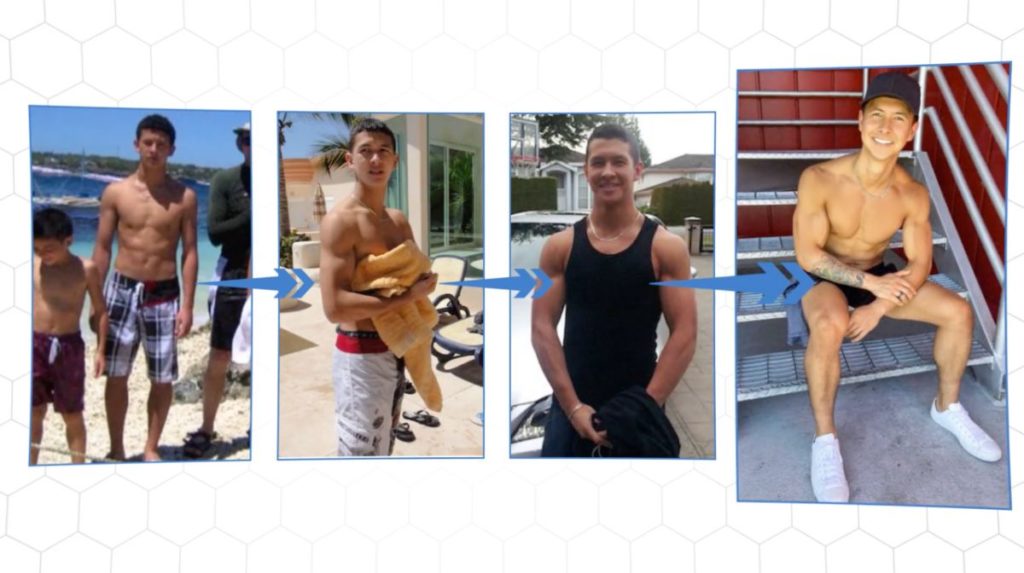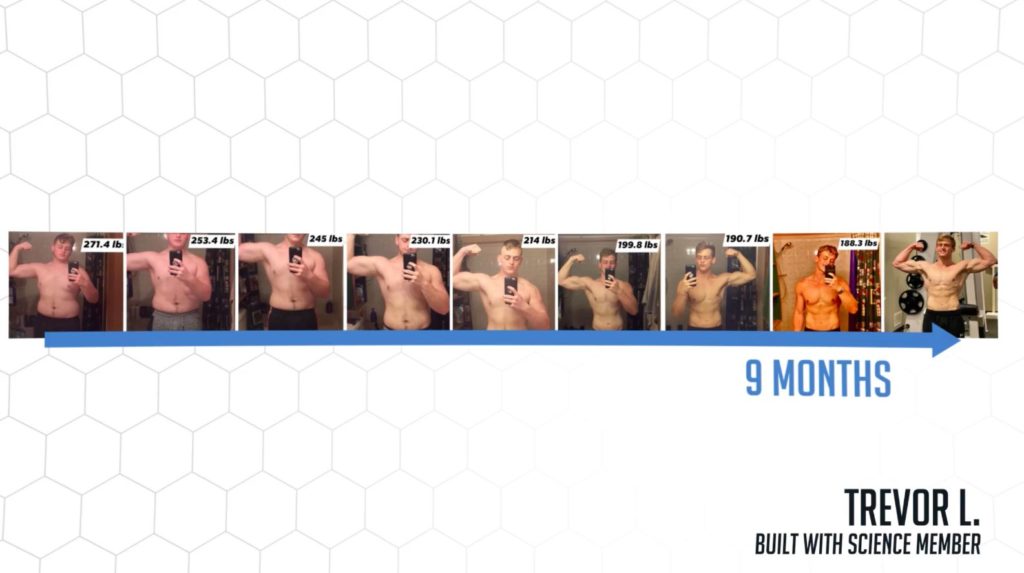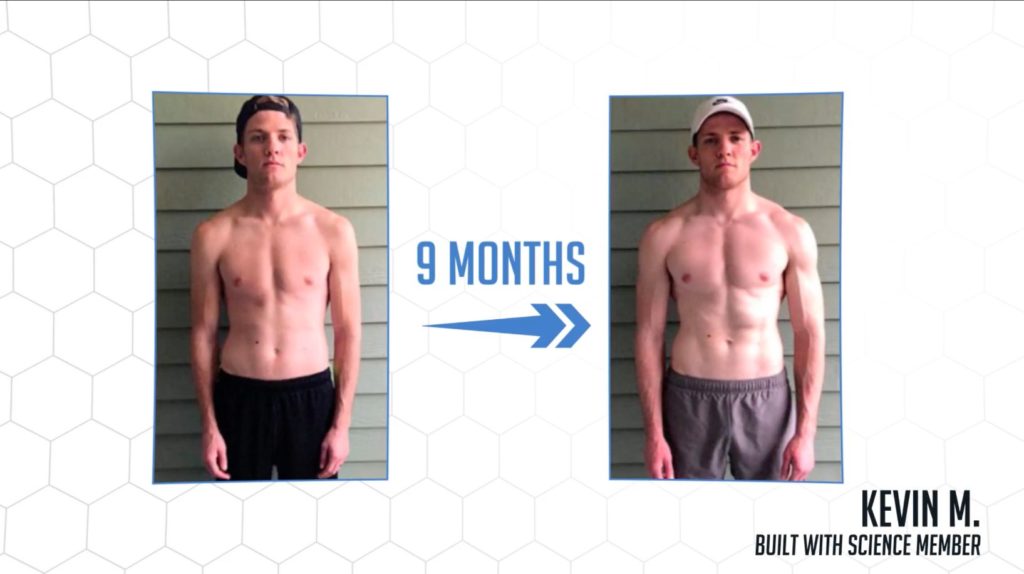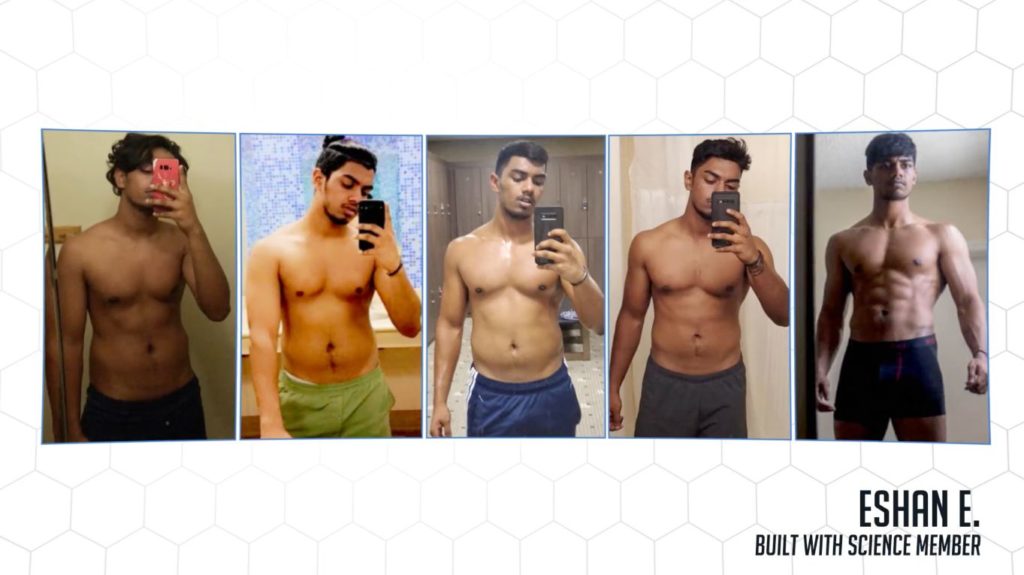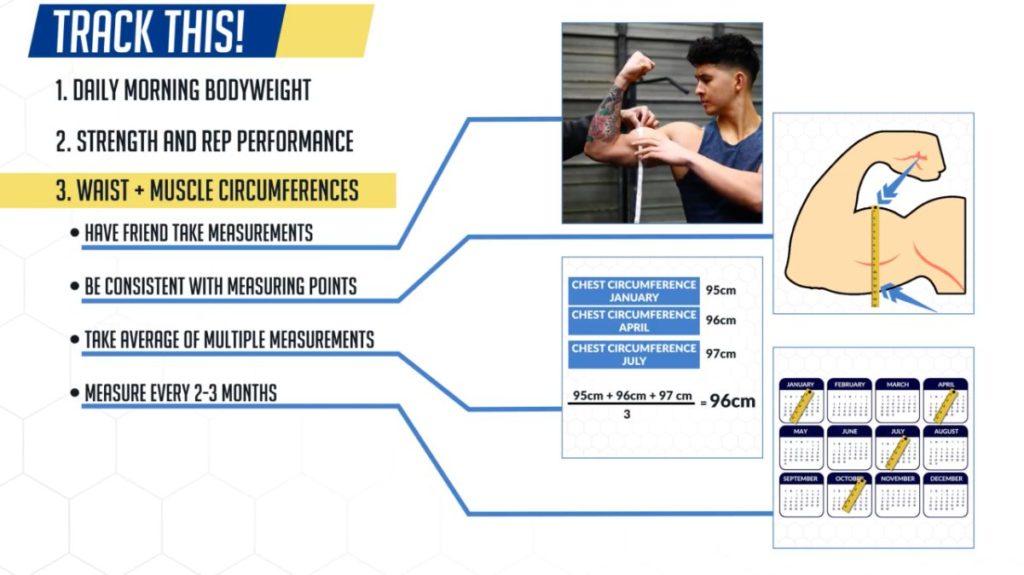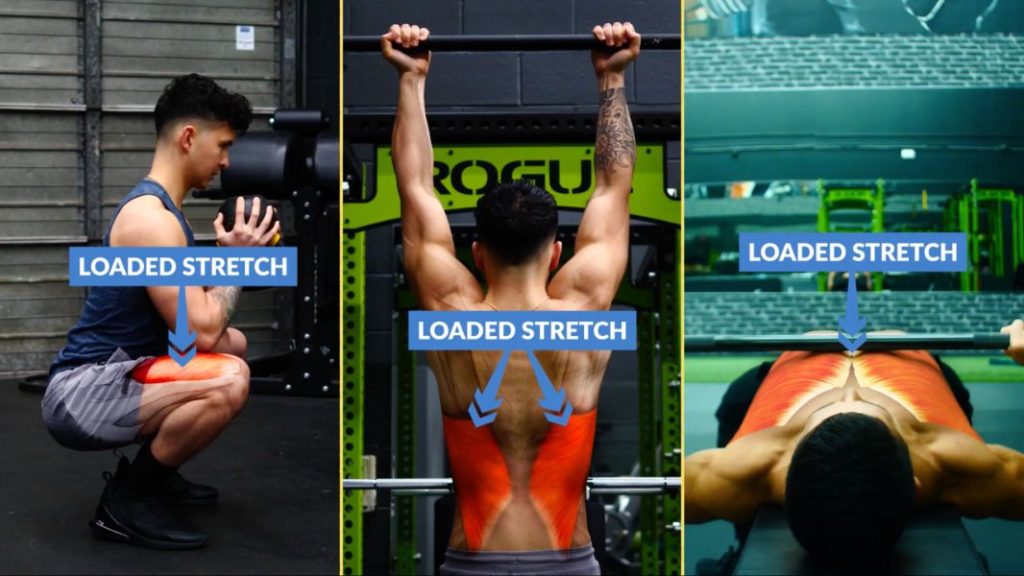How To Build Muscle Fast (4 HIDDEN Mistakes You Don’t Realize You’re Making)
Not seeing the gains you know you should? Chances are, there are 4 mistakes you're probably guilty of! To help you build muscle as fast as you possibly can, I cover each mistake and how you can correct it here.
If you're like most people, you must have asked these 2 questions while seeking gains in the gym, 'How can I build muscle as fast as possible? And how do I know if I'm doing it correctly?' See, packing on additional muscle is hard to begin with. It’s made even harder and frustrating when you put in the work... Yet it appears that your muscles are not growing. But the reason why it seems that you can't gain muscle no matter what you do? Well, it's not because you're 'genetically cursed'.
Instead, it's more often than not due to a few key mistakes you don't even realize you're making. These mistakes keep you stuck in the same place. Aside from the most obvious and commonly discussed mistakes that you should definitely check off the list, including getting enough:
- Protein
- Sleep AND
- Calories
...In general. That said, there are still a few lesser-known mistakes you're probably guilty of. And these are the ones I want to touch on in this article. By the end of it, you'll know exactly how to tell if you're actually building muscle as fast as you should be. And how to actually build muscle as fast as you can.
By the way: if you're looking for a training program that'll help you avoid these mistakes altogether, I've got just the thing for you. Every BWS program is designed to help you transform your physique in the most time-efficient manner. And best of all? It's all rooted in science. For more information on how BWS programs can help you to build muscle - FAST:
Click the button below to take my analysis quiz to discover the best program for you:
↓
Mistake 1: Having Unrealistic Expectations About Muscle Gain Rates
The first mistake is that you just don't have realistic expectations about muscle gain rates. And admittedly, this is very slow - especially when compared to losing fat. As a natural, it can take months to put on just a few pounds of muscle. Yet, you'd take just a week or two to lose that same amount of weight. But in fat.
How Long Does It Take To Build Muscle?
But just how quickly can you gain muscle? A recent 2020 study and a larger analysis of over 200 studies offer some insight into that. These found that on average, subjects were able to increase their muscle size by about 1 to 6% per month. So, let's assume that you currently have 15-inch arms. In line with the findings, a realistic increase in arm circumference from 2-3 months of training would only be about half an inch. Untrained individuals are likely able to gain slightly more than that. And vice versa for more trained individuals.
In terms of weight gain, this would translate to about 2lbs of muscle per month when you first start training. But, of course, this will quickly dwindle down with experience. This may not sound like much. And, to be honest, it visually isn't. But this effect will compound and lead to significant gains over the years. Just like it did with myself and everyone else who trusted the process and remained consistent.
So, if you're currently not experiencing noticeable gains week after week? Just note that this doesn't necessarily mean you're doing anything wrong. Instead, you may just need to re-align your expectations.
Mistake 2: Not Measuring Or Tracking Your Progress
Here's a follow-up to the previous point. Although progress will be slow, you ultimately still nee to ensure you're actually making progress. But how can you know if you're making gains if you aren't measuring or tracking anything?
This is especially true for muscle growth because of how slow the process is. And because of how easy it is for additional fat gain to mask the gains you don’t realize you’re actually making as you put on more weight over time.
Real-Life Examples Of Why You Need To Measure/Track Your Progress
To put this into perspective, here’s Trevor and his 9 month transformation using one of our Built With Science programs. You can clearly see drastic changes in his fat loss over the 9 months. And if he didn’t take any measurements, he could (in theory) just use the mirror to assure him of his progress.
Contrast that with another one of our members, Kevin, and his 9-month muscle building transformation. His transformation was indeed incredible. However, as you can see, the gains he made week to week and month to month would have been barely noticeable. That is, until it all compounded over several months.
And then, using another member of ours, Eshan, as an example. You can see that it becomes even more challenging to visually assess your progress when you put the additional fat gain that often accompanies muscle growth into the picture. It’s not until you eventually strip off that excess fat - do those hidden gains become visible.
If you're inspired by the results our BWS members have gotten, then our 3-on-1 coaching program will be of interest to you. This is where my team of qualified personal trainers and nutritionists (plus myself!) will guide you through the process of achieving your dream physique in the most science-backed, time-efficient way possible. Find out more here:
Click the button below to find out more about the 3-on-1 coaching program:
↓
Metrics You Can Use To Measure Your Progress
By now, it should be clear to you why you need to be diligently tracking key indicators that’ll help you determine if you’re truly building muscle. Despite what the mirror may or may not say.
So, what are these 'key indicators', specifically? You can track your daily morning body weight. But, most importantly, you should track your strength and rep performance in your exercises. That's because while you might gain weight while you're bulking, it's not as clear-cut in cases of body recomposition (i.e. where you build muscle and lose fat simultaneously). Here, your weight might stay the same or even decrease as you're building muscle and losing fat at the same time.
But if your strength and/or rep performance is improving during your workouts, then you can rest assured that you're likely building additional muscle. This is regardless of what your weight is doing.
Another helpful metric you may want to look at is both your waist circumference and your muscle circumference measurements for your main muscle groups. As shown in the study mentioned earlier, the muscle circumference measurement (at least for the arms) correlates well with increases in muscle size.
But to improve the reliability of this method and minimize error, you'll want to:
- Have someone measure for you
- Be consistent with where you measure
- Take the average of multiple measurements AND
- Measure every couple of months or so
If:
- You're getting stronger AND your muscle measurements are increasing AND you're gaining weight OR
- Your muscle measurements are at least staying relatively the same YET you're getting leaner, stronger, AND your waist measurement is decreasing
...Then in both of these scenarios, you can be quite confident that you're building additional muscle.
Mistake 3: Constantly Switching Up Your Exercises
The next mistake you may not realize you’re making is switching up your exercises too often. Many people do this with the idea that it’ll “confuse” the muscles. And prevent it from getting used to the same workout week after week. But in reality... When a new exercise is initially introduced, it takes your body at least a few weeks to neurologically adapt to it. And learn how to actually perform the movement most efficiently. This is why you’ll get very sore and progress the fastest in the first few weeks of a new exercise.
Only after this initial learning, or “re-learning” phase, is when strength increases are then predominantly due to increases in muscle size. Meaning that if you switch your exercises too often? All you’re doing is essentially putting your body through this learning phase without giving it a chance to truly master the exercise and progress it to stimulate more muscle growth.
The result of this mistake is clearly seen in the literature. Subjects that constantly switch their exercises as opposed to keeping them the same week after week tend to:
- Experience less strength gains AND
- This would likely translate to less muscle growth in longer-duration studies
Keep Exercises In Your Training Program For At Least 4-8 Weeks
So, a good rule of thumb for you when it comes to how to build muscle mass fast is to choose a decent variety of exercises for each muscle group. And then, keep them in your weight training routine for at least 4-8 weeks. This will give your body sufficient time to neurologically master the movement to the point where further improvements in that movement will most likely come from added muscle. And this will give you an opportunity to start monitoring your week to week progress more accurately. You can then exchange the exercise for a close variation of it only if:
- You're plateauing on that exercise OR
- It's getting stale and demotivating for you to do OR
- The exercise is starting to cause aches and pain
Otherwise, keep the exercise in your training routine. And continue progressing on it.
Mistake 4: Neglecting Loaded Stretch When Training
Okay, so maybe you're not switching up your exercises every workout. And, instead, you're staying consistent with them and progressing them week after week. Even if you're doing that... This last mistake can hinder your growth when it comes to how to build muscle as fast as possible. And it's none other than neglecting the loaded stretch component of your training. This often comes down to failing to use a full range of motion, particularly on key exercises where this matters the most.
Because what’s interesting is that several papers support the idea that applying tension to a stretched muscle seems to be an independent stimulator of muscle growth in addition to tension itself. And seems to provide a different type of growth in the muscle. Meaning that in exercises like:
- Squats for the quads
- Chin-ups for the lats AND
- Pressing movements for the chest
...The full stretch under load that your target muscles get at the bottom of these specific movements is extremely important for stimulating muscle growth. It’s partly why these movement patterns movements are so effective at stimulating growth. And is why in the literature we see significantly more growth with a full range of motion on these movements when compared to a shorter range of motion but with heavier weight.
Pay Extra Attention To The Bottom Position When Performing Exercises
So, during your pressing movements like the dumbbell press or even push-ups, pay attention to the bottom position where your chest is fully stretched under load. Get as deep as you comfortably can. Avoid simply bouncing out of this position. The same goes for the quads and the squat. Up to a certain point, the deeper you go, the more loaded stretch your quads will experience. And the more growth you’ll be able to stimulate.
In addition to incorporating these movement patterns and doing so with a full range of motion, you can also look for ways to further increase the range and loaded stretch you get from these exercises. For instance:
- During push-ups - Performing them on a stack of dumbbells or books is an easy way to provide a greater loaded stretch to your chest
- During lunges - Performing them with your front foot elevated can help you get a greater loaded stretch on your glutes to stimulate more growth
But, in general, just be aware of the importance of this bottom position in these key movements. It's often the most difficult part of the movement. And is easy to skimp out or cheat on, but doing so may very well be the reason why you're not seeing the results you want despite doing all the right exercises.
How To Build Muscle Fast: Summary
So, as a recap, here’s a quick summary of the key points of the article. When it comes to how to build muscle fast, yes, you need to work hard. But you also can't overlook the other important variables like:
- Tracking your progress
- Executing the right exercises in the right manner
- Properly fueling your body AND
- Managing your recovery
And for an all-in-one system that shows you step by step how to optimize each one of these variables to transform your body as efficiently as possible just like it has done for thousands of others, then:
Click the button below to take my analysis quiz to discover the best program for you:
↓






